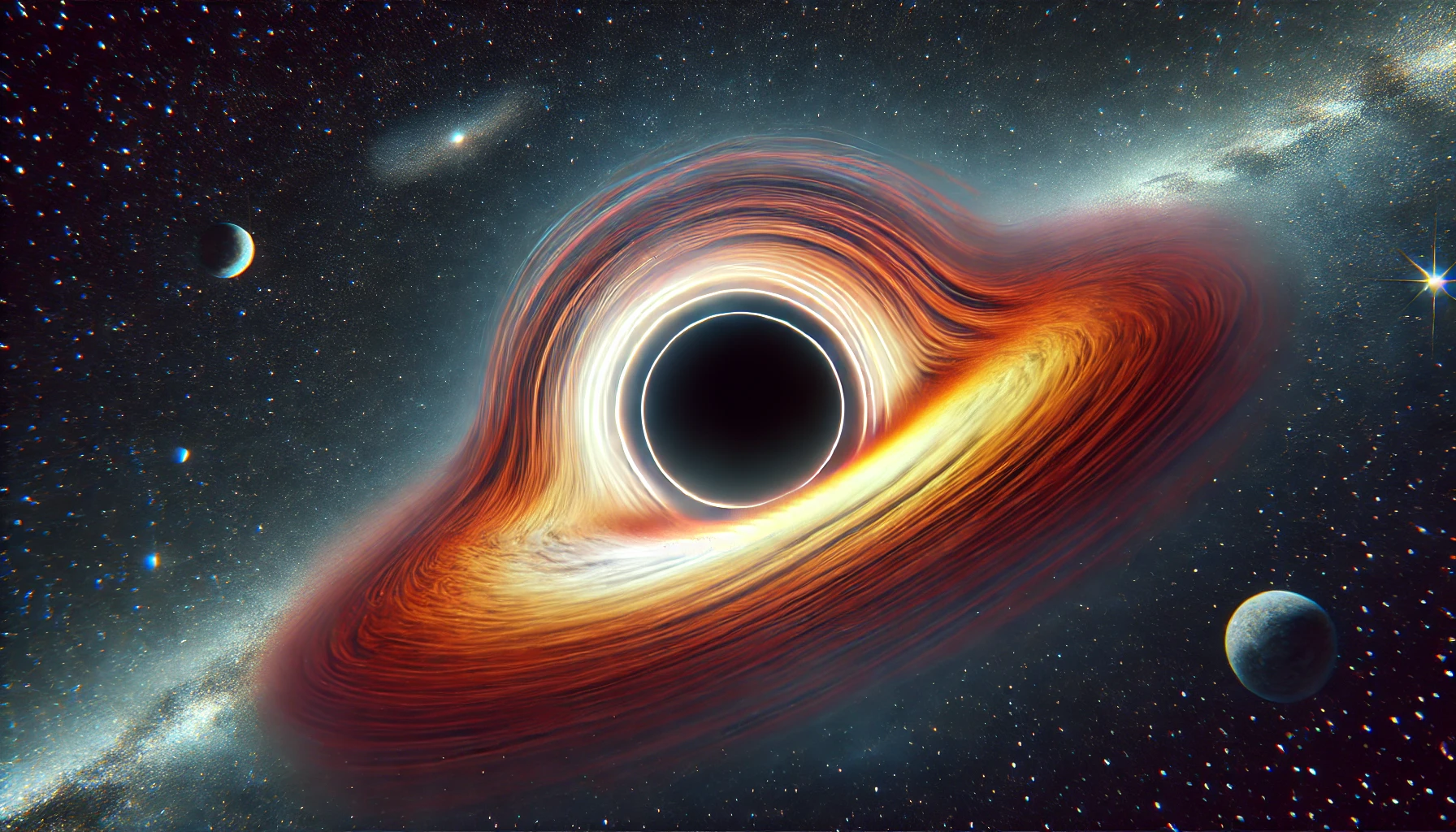The Science Behind Black Holes and India’s Role in Unraveling Their Mysteries

Black holes are some of the most fascinating and enigmatic objects in the universe. These cosmic giants captivate scientists and the general public alike due to their incredible gravitational pull and ability to warp the very fabric of space and time. But did you know that India has played a crucial role in the study of black holes? From pioneering scientists like Subrahmanyan Chandrasekhar to India’s ambitious space missions, the country has significantly contributed to our understanding of black holes. In this blog, we’ll explore both the science behind black holes and India’s important contributions to this field.
What is a Black Hole?
A black hole is a region in space where the gravitational pull is so strong that not even light can escape. Black holes form when massive stars collapse under their own gravity at the end of their life cycles. At the heart of a black hole lies a point of infinite density known as the singularity, where space-time curves infinitely. Surrounding the singularity is the event horizon—the boundary beyond which nothing can return.
Subrahmanyan Chandrasekhar: A Pioneer of Black Hole Physics
Indian-American astrophysicist Subrahmanyan Chandrasekhar (1910-1995) revolutionized our understanding of stellar evolution, which laid the foundation for black hole theory. In 1930, while studying at Cambridge, Chandrasekhar proposed that stars with masses above a certain limit—now known as the Chandrasekhar Limit—would not form white dwarfs, but instead would collapse into denser objects like black holes or neutron stars.
Chandrasekhar’s ideas were initially ridiculed by his contemporaries, including the renowned British astrophysicist Arthur Eddington. However, his theories were later proven correct, and he went on to win the Nobel Prize in Physics in 1983 for his contributions to the understanding of stellar evolution, including his work on black holes. Chandrasekhar’s discovery was pivotal in the development of black hole physics, earning him a place as one of the greatest astrophysicists of the 20th century.
C.V. Vishveshwara: The “Black Hole Man of India”
C.V. Vishveshwara, often referred to as the “Black Hole Man of India,” was one of the first scientists to explore the stability of Schwarzschild black holes. In the 1970s, he discovered the quasinormal modes of black holes, which describe how black holes “ring” like a bell when disturbed. These vibrations, caused by perturbations in black holes, play a key role in the detection of gravitational waves, which were first observed in 2015. Vishveshwara’s work paved the way for modern gravitational wave astronomy, furthering our understanding of black hole dynamics.
India’s Space Exploration: The Astrosat Mission
India’s space agency, the Indian Space Research Organization (ISRO), has made significant strides in black hole research through its space missions. In 2015, ISRO launched Astrosat, India’s first dedicated multi-wavelength space observatory. One of its key missions is to study black holes by observing the high-energy X-rays emitted by these enigmatic objects. By detecting X-ray emissions, scientists can gain insights into the properties of black holes and other celestial phenomena.
In addition to Astrosat, ISRO has been involved in international collaborations aimed at exploring black holes and other extreme cosmic events. These efforts contribute to the global scientific community’s understanding of black holes and highlight India’s growing role in space exploration.
The First Image of a Black Hole
In April 2019, the world was captivated by the first-ever image of a black hole, captured by the Event Horizon Telescope (EHT). This historic image showed the supermassive black hole located in the galaxy M87, approximately 55 million light-years from Earth. The image revealed a glowing ring of gas and dust surrounding the black hole’s event horizon, with the dark center representing the black hole itself.
India contributed to this monumental achievement through its scientific collaborations and research on black hole imaging. The success of the EHT project underscores the importance of global cooperation in astrophysics.
Hawking Radiation and the Future of Black Hole Research
One of the most exciting theories about black holes comes from renowned physicist Stephen Hawking, who proposed that black holes are not entirely black. According to his theory, black holes emit small amounts of radiation—now called Hawking radiation. Over time, this causes black holes to lose mass and eventually “evaporate.” This discovery has profound implications for our understanding of black holes, quantum mechanics, and the fate of stars.
Indian scientists continue to contribute to black hole research, with future projects planned to explore these enigmatic objects even further. As technology advances, India’s space missions and scientific community are expected to play a critical role in unraveling the remaining mysteries of black holes.
Conclusion: India’s Role in the Study of Black Holes
Black holes are not just a cosmic curiosity—they are gateways to understanding the fundamental forces of the universe. From Subrahmanyan Chandrasekhar’s pioneering work to ISRO’s cutting-edge space missions, India has played a crucial role in black hole research. As we continue to explore the mysteries of these cosmic giants, India’s contributions to astrophysics will remain essential in advancing our knowledge of the universe.
Call to Action: Fascinated by black holes and space exploration? Stay tuned to the latest research and discoveries by following India’s growing role in the global space race!



